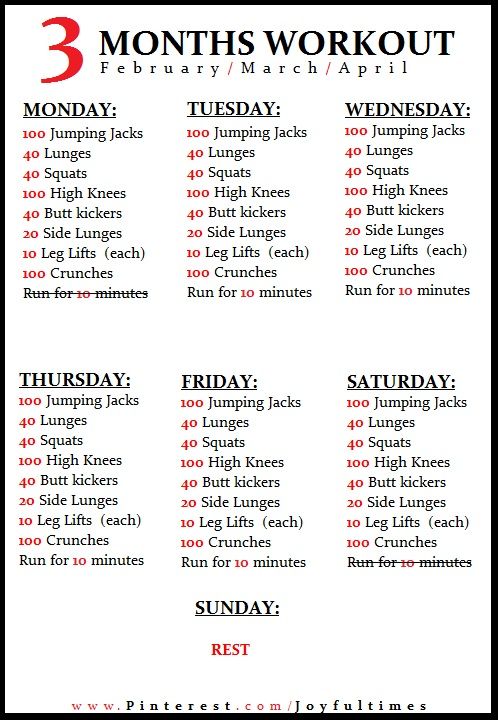
It is important to include all 11 major muscle groups in a bodybuilding exercise. This way, you can target specific areas of your body and work on building them in a balanced way. These exercises are quick and effective for every muscle group. There are many ways to get the best possible results in a shorter period of time. Here are some good exercises for each muscle group. Ensure that you use a weight that you feel comfortable lifting.
Make sure to group the major muscle groups when you create a workout plan. For example, if your chest muscles are to be trained twice per week, This will help you achieve the best results with every muscle. Each muscle should receive the appropriate stimulation and rest. You could train your chest muscles alternate days. Instead, you would train them each twice per week. This will bring you twice the benefits.

Nonstop workouts will test the endurance of the most advanced exercisers. These include training concepts such as 21s and drop sets. These workouts help you build stamina and perform the same exercise multiple-times. Always remember to rest between sets for 30 seconds. In addition, a nonstop workout will also help you train your muscles faster than a single muscle group. This type of training program will test you endurance. It's an easy way to build muscle mass without spending too much.
You can also do exercises for your major muscle groups. Use different weights and techniques to work each group. This way, you'll have a more balanced body. You will see the best results regardless of whether you are working your stomach muscles or your leg muscles. A single workout will make a huge difference. It is important to know your muscle targets before you can create a workout plan. You can find a complete list of the best exercises for each muscle group at the end of this article.
You can also work your back. This muscle group includes the triceps and biceps. The biceps brachii is the largest of these muscles. The back extending muscles keep the spine extended and strong. The two primary back extending muscles are the erector spinae and multifidus. They help us lift our arms as well as our legs.

The best workouts for every muscle will target all the major muscle groups, and be effective for each individual. A biceps lift will help strengthen the biceps of the upper arms. All back muscles include the brachialis, which is a small muscle under the biceps and the brachioradialis. This large muscle is located in the forearm. Some exercises may work for all these groups.
FAQ
Do I have to count calories?
It is possible to wonder "What diet is best for me?" or "is counting calories necessary?" This depends on your health and lifestyle.
The Best Diet For Me - Which One Is Right For You?
My current health status, personal goals, preferences, and overall lifestyle all play a role in choosing the right diet. There are many diets out there, some good and some bad. Some work well for certain people while others don't. So what should I do? What can I do to make the right decision?
These are the main questions addressed by this article. The article starts by introducing the many types of diets currently available. The pros and cons of each diet are then discussed. Finally, we'll look into how to choose the best one for you.
To begin, let's take a quick look at the different types of diets.
Diet Types
There are three main types. Low fat, high proteins, and ketogenic. Let's briefly discuss them below.
Low Fat Diets
A low fat diet is a diet that restricts the amount of fats consumed. This is achieved through reducing intakes of saturated fats (butter and cream cheese, for example). These fats can be replaced with unsaturated fats like avocados and olive oil. A low fat diet is often recommended for those who want to lose weight quickly and easily. This type of diet can lead to constipation and heartburn as well as indigestion. In addition, it may lead to vitamin deficiencies if a person doesn't get enough vitamins from their food.
High Protein Diets
High-protein diets limit carbohydrates and favor proteins. These diets typically have more protein than other diets. These diets are meant to increase muscle mass, and burn more calories. The downside is that they may not provide adequate nutrition for someone who needs to eat regularly. They are not suitable for all people because they can be restrictive.
Ketogenic Diets
Also known as keto diets, ketogenic diets are also called keto diets. They are high in fat, moderately high in protein and low in carbohydrates. These are often used by bodybuilders and athletes because they allow them the ability to train harder and for longer periods of time without feeling tired. To avoid side effects such as fatigue, nausea, headaches, or other unpleasant side effects, you must strictly adhere to their instructions.
What can you do if your immune system is weak?
The human body is composed of trillions if not billions of cells. These cells work together to form organs and tissues that perform specific functions. One cell is replaced by another when it dies. Cells also communicate with each other using chemical signals called hormones. Hormones control all bodily functions, including growth, development, metabolism, immunity and immune system.
Hormones refer to chemicals produced throughout the body by glands. They travel through our bloodstream and act as messengers, controlling how our bodies function. Some hormones are produced internally while others are made outside of the body.
When a hormone-producing gland releases their contents into the bloodstream, hormone production begins. Once hormones become active, they move throughout the body until reaching their target organ. In some cases hormones can remain active for only a few hours. Other hormones stay active longer and continue to influence the body's functioning even after they leave the bloodstream.
Some hormones may be produced in large numbers. Others are made in small quantities.
Some hormones are made at certain times in our lives. Estrogen is one example. It's produced in puberty, pregnancy and menopause. Estrogen is important for women to develop breasts and maintain bone density. It also helps prevent osteoporosis. It also promotes hair growth and keeps skin smooth and soft.
What is the working principle of an antibiotic?
Antibiotics are drugs that destroy harmful bacteria. To treat bacterial infections, antibiotics are used. There are many kinds of antibiotics. Some can be taken orally, others are injected and some are applied topically.
People who have been exposed are often given antibiotics. If someone has chicken pox, they might need to take an oral antibiotic in order to prevent shingles. A penicillin injection might be given to prevent pneumonia in someone who has had strep.
Children should not be given antibiotics without the consent of a doctor. Children are at greater risk of developing side effects from antibiotics than adults.
Diarrhea being the most common side effect of antibiotics. Other possible side effects include diarrhea, nausea and vomiting, allergy reactions, dizziness, dizziness, stomach cramps, nausea, vomiting or allergic reactions. These symptoms generally disappear once the treatment has finished.
What's the difference between a calorie and kilocalorie?
Calories measure the energy content of food. A calorie is a unit of measure. One calorie represents the energy required to raise one gram of water's temperature by one degree Celsius.
Kilocalories refer to calories in another term. Kilocalories measure in thousandths a calorie. 1000 calories, for example, equals one kilocalorie.
How can you tell what is good?
Listen to your body. Your body knows what you need when it comes time to eat, exercise, and get enough rest. It's important to pay attention to your body so you don't overdo things. Take care of your body and make sure that you're staying healthy.
What is the difference in a virus and bacteria?
A virus is a microscopic organism that cannot reproduce outside its host cell. A bacterium, a single-celled organism, reproduces by splitting into two. Viruses are small, around 20 nanometers in size. Bacteria are much larger, at 1 micron.
Viruses are often spread through contact of infected bodily fluids like saliva, urine or semen. Bacteria can be spread by direct contact with infected objects and surfaces.
Viruses can enter our bodies through cuts, scrapes, bites, or other breaks in the skin. They can also penetrate the skin through the eyes, nose or mouth.
Bacteria can get into our bodies through cuts, scrapes and burns, insect bites, or other skin breaks. They may also be introduced into our bodies through food and water as well as soil, dirt, dust, and animals.
Viruses and bacteria both cause illness. But viruses can't multiply within their hosts. Viral infections can only cause diseases in living cells.
Bacteria can grow in their hosts and cause disease. They can even invade other parts of the body. They can even invade other parts of the body, which is why antibiotics are necessary to eradicate them.
What is the best food for me?
Your age, gender, body type, and lifestyle choices will all impact the best diet. It is also important to think about how much energy you use during exercise and whether you like low-calorie foods.
Intermittent fasting is a good option if you're trying to lose weight. Intermittent Fasting means that you eat only specific meals throughout your day and not three large meals. This may be a better option than traditional diets with daily calorie counts.
Intermittent fasting is believed to increase insulin sensitivity. It may also reduce inflammation. This may lead to a decrease in diabetes risk and blood sugar levels. Research suggests that intermittent fasting can promote fat loss and improve overall body composition.
Statistics
- WHO recommends consuming less than 5% of total energy intake for additional health benefits. (who.int)
- nutrients.[17]X Research sourceWhole grains to try include: 100% whole wheat pasta and bread, brown rice, whole grain oats, farro, millet, quinoa, and barley. (wikihow.com)
- According to the Physical Activity Guidelines for Americans, we should strive for at least 150 minutes of moderate intensity activity each week (54Trusted Source Smoking, harmful use of drugs, and alcohol abuse can all seriously negatively affect your health. (healthline.com)
- The Dietary Guidelines for Americans recommend keeping added sugar intake below 10% of your daily calorie intake, while the World Health Organization recommends slashing added sugars to 5% or less of your daily calories for optimal health (59Trusted (healthline.com)
External Links
How To
What does the meaning of "vitamin?"
Vitamins are organic compounds found naturally in food. Vitamins help us absorb nutrients from foods we eat. Vitamins cannot be produced by the body. They must be acquired from food.
Two types of vitamins exist: water-soluble vitamin and fat-soluble vitamin. Water soluble vitamins dissolve easily in water. Examples include vitamin C,B1 (thiamine), B2 (riboflavin), B3 (niacin), B6 (pyridoxine), folic acid, biotin, pantothenic acid, and choline. Fat-soluble vitamins can be stored in the liver or in fatty tissue. Vitamin D, E, K and A are some examples.
Vitamins are classified based on their biological activity. There are eight major types of vitamins:
-
A – Essential for normal growth, and the maintenance of good health.
-
C is important for nerve function and energy production.
-
D - necessary for healthy bones and teeth.
-
E is needed for good reproduction and vision.
-
K – Required for healthy nerves & muscles.
-
P - vital for building strong bones andteeth.
-
Q - Aids in digestion and absorption.
-
R - Red blood cells are made from red blood cells.
The recommended daily allowance (RDA) of vitamins varies depending on age, gender, and physical condition. RDA values are set by the U.S. Food and Drug Administration (FDA).
For adults over 19, the RDA for vitaminA is 400 micrograms per daily. Because it is essential for the development of the fetus, pregnant women should consume 600 micrograms per daily. Children ages 1-8 require 900 micrograms per day. Infants below one year old require 700mg per day. But, between 9 months to 12 months, the amount drops to 500mg per day.
Children aged 1-18 years need 800 micrograms daily, while children overweight require 1000 micrograms per days. Children who are severely obese or underweight will need 1200 micrograms each day.
Children aged 4-8 years old who have been diagnosed as having anemia require 2200 micrograms of vitamin C per day.
2000 micrograms are required daily for good health in adults over 50. Mothers who are pregnant, nursing, or have a high nutrient need will require 3000 micrograms a day.
Adults over 70 require 1500 micrograms each day, since they lose around 10% of their muscle mass every decade.
Women who have been pregnant or are lactating require more than the RDA. Pregnant women require 4000 micrograms daily during pregnancy, and 2500 micrograms every day after birth. Breastfeeding mothers need 5000 mg per day when breastmilk is being produced.